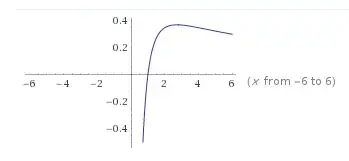Taking logs of both sides of $e^{\log(a)x} = a^x = x$ gives $\log(a)x = \log(x)$, and rearranging gives $\frac{\log(x)}{x} = \log(a)$. The function $\frac{\log(x)}{x}$ takes values between $-\infty$ and $\frac{1}{e}$ (this is not too hard to check). Therefore, $a^x = x$ has a solution for any $0 < a < e^{\frac{1}{e}}$.
In fact, we can do better: $a^x = x$ has exactly one solution for $0 < a \leq 1$ and $a = e^{\frac{1}{e}}$, and exactly two solutions for $1 < a < e^{\frac{1}{e}}$. This can again be deduced by looking at the graph of $\frac{\log(x)}{x}$: 
